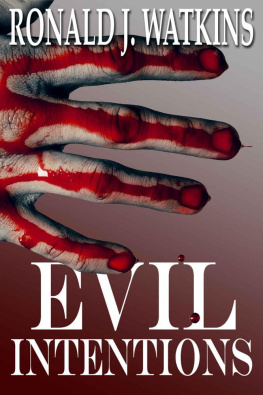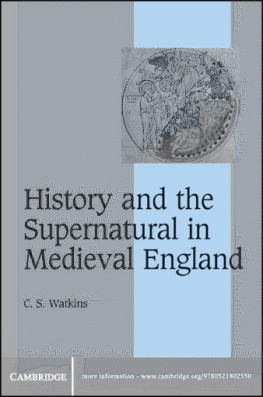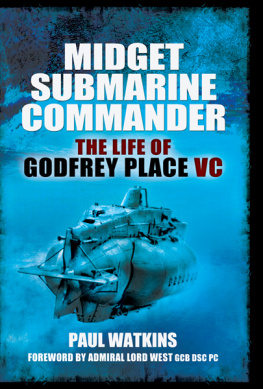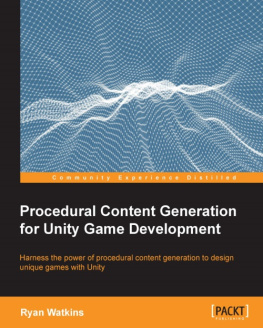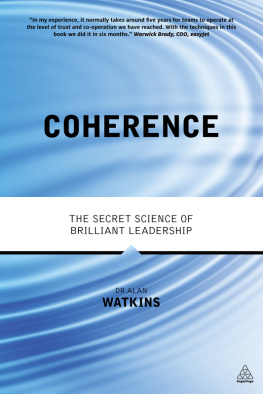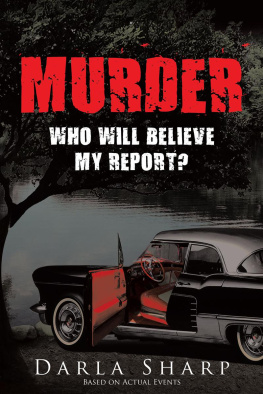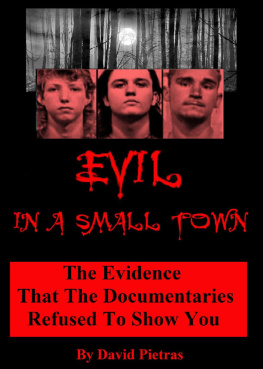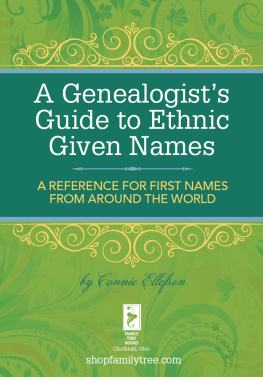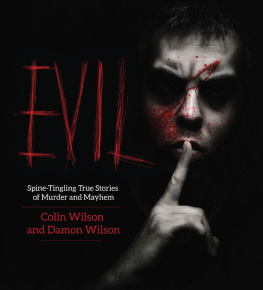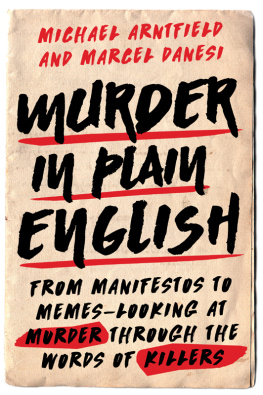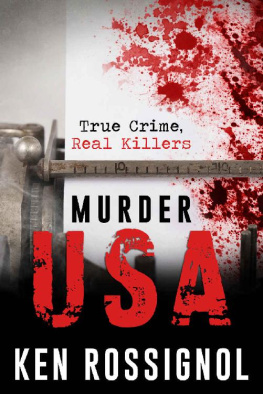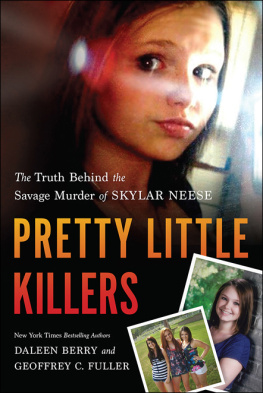EVIL INTENTIONS
by
Ronald J. Watkins
Graphic and effective.
Publishers Weekly
A horrifying story.
Booklist
____________________________
Originally published in hard copy by:
WILLIAM MORROW AND COMPANY, INC.
NEW YORK
Republished in 2011 by Ronald J. Watkins Books [Publisher]
Ronald Watkins 1992
All Rights Reserved
www.RonaldJWatkins.com
The right of Ronald Watkins to be identified as the Author of the Work has been asserted by him in accordance with the Copyright, Designs and Patents Act 1988.
All rights reserved. Apart from any use permitted under copyright law no part of this publication may be reproduced, stored in a retrieval system, or transmitted, in any form or by any means without the prior written permission of the publisher, nor be otherwise circulated in any form of binding or cover other than that in which it is published and without a similar condition being imposed on the subsequent purchaser.
WatkinsLiterary.com
Cover design by David E. Payne
Other books by the author
Fiction
Cimmerian: A Novel of the Holocaust
The Far Side of the Moon
A Suspicion of Guilt
Shadows and Lies
The Dutchman
A Deadly Glitter
The Flower Girl
Alter Ego
True Crime
Against Her Will
The Naked Streets
Romance
Nocturne
SciFi/Fantasy
Hunter: Warrior of Doridia
Caravans of Doridia
Non-Fiction
Unknown Seas
Birthright
High Crimes and Misdemeanors
The Summit Murder Series with Charles G. Irion
Murder on Everest
Murder on Elbrus
Murder on Mt. McKinley
Murder on Puncak Jaya
Murder on Aconcagua
Murder on Vinson Masiff
Murder on Kilamanjaro
Abandoned on Everest [prequel]
If you enjoy Evil Intentions be certain to read Against Her Will or The Naked Streets , true crime books also by Ronald J. Watkins
TABLE OF CONTENTS
Dedication:
For Suzanne
AUTHORS NOTE
THIS IS A TRUE account of murder. It is based on official records and extensive interviews
with all key participants, including the killers. Real names have been used except to spare
the innocent and those innocently involved with the guilty. An * after a name indicates it is a pseudonym. Even when names and descriptions have been changed, the roles of the individuals have been correctly portrayed. No character has been invented; no scenes have been manufactured. Thoughts and conversations are those reported.
There were discrepancies when more than one person reported the same incident. The account chosen is that determined to be most correct, given the history and personal character of the sources.
No photographs have been used at the request of the Rossetti family.
I know indeed what evil I intend to do,
but stronger than all my afterthoughts is my fury,
fury that brings upon mortals the greatest evils.
Euripides, Medea
PROLOGUE
I will lift up my eyes unto the hills, from whence cometh my help.
Psalm 121
Tears mixed with melting snowflakes on the policemans face as he stood in the falling snow directing the solemn procession of cars. The continuous train of vehicles extended nearly two miles from the church to the cemetery. The snow fell silently, muffling all sound. The aged tombstones were crested with white. Slowly the mourners gathered about the gaping hole shielded by the black canopy. Poised above the earth stood a coffin.
It was a large gathering by community standards. Those who stood on the perimeter of the cemetery could scarcely hear what was said, but it was of little consequence. They were here to pay respects, to remember as much as their hearts could bear. The priest blessed them and this place, then, just before speaking, made the sign of the cross upon the coffin.
For well over three hundred years the townspeople have been laid to rest in even rows overlooking the gentle river. Those dead of aging, of disease, of mischance, and of war, all are here, but in the memory of anyone, there is only one murder victim.
+
The town has existed in the lowlands of Massachusetts for nearly four centuries, a place not distinctively different from hundreds of others in the region. Located a convenient but significant distance from Boston, the towns economic situation may have altered with the years, but not the character of the place or its people. Residents are polite, inward-looking, and embrace their own with candor and warmth. The children of one family are the children of all; forces threaten only from outside. Children take up their adult lives nearby, and a move of twenty minutes away is considered far. Making one across the United States is like journeying to some primitive corner of the Earth.
Parents accept that their children must go away; they accept because they have no choice. And if in their hearts they dread the nightmare of every parent, they hold that thought to themselves, for when tragedy befalls one of their own its dark presence touches each of them. They have made a pact with fate that as long as the dread is never uttered, it will never strike.
In 1981, that unspeakable tragedy occurred and on this early February day, the townspeople stood in the intermittent snowfall as the murdered daughter was laid to rest. As the coffin was lowered into the frozen earth, each member of the family tossed a crimson rose into the grave. The mourners wept in grief and sympathy and could only ask themselves, How could this happen? What kind of men could do such a thing?
Parents stared at their adult children with fresh uneasiness. Anything could happen. Anything. Even the nearby towns, where their offspring lived, were now more distant and foreign. Nothing was the same.
PART ONE
SUZANNE
Its nice to be important, but its more important to be nice.
Suzanne Maria Rossetti
CHAPTER ONE
It is an all-American city. Saugus, Massachusetts, is the kind of place most towns claim to be, but rarely are. With a population of 27,000 people and less than ten miles outside of Boston on the North Shore, it is a quiet city. Although the townspeople commute to the metropolis for work, there is a deep sense of community and of history. The children grow up honest and industrious; couples more often than not grow old together.
There are two centers to the town, located approximately one mile apart. At Cliftondale Square are a street rotary and the business district with a grocery store, small restaurant, post office, and St. Margarets, the Catholic church. Across the street is the Saugus Federal Credit Union and Peter A. Rossettis Insurance Agency.
Saugus is seven miles from Lexington and only four miles farther from Concord. History has not marked its name with theirs, but the Revolutionary War had scarcely begun before the farmers and merchants of Saugus mustered five companies of 247 men.
A mile away is the government center for Saugus and the town library. There is a rotary here also, but this one is larger and bears a war memorial. The Yankees of Saugus served in the Civil War and 160 of the dead are neatly listed on it. The town hall across the street is relatively new, having been built in 1875. Another memorial announces that 792 of Sauguss young men fell in what was then called the Great War. And so it is for the Second World War and Korea and Vietnam. There are memorials for all the wars and the name of each of the dead is meticulously inscribed, the stark lists muting the tragedy each name bares.
Saugonians are proud their town is older than Boston. In 1629, just nine years after the landing at Plymouth Rock, settlers sailed down the coast from Salem into the mouth of the Saugus River. It flows just a few miles inland, but it was a safe harbor for fishing vessels and offered ready access to the bountiful Atlantic ocean.
Next page
